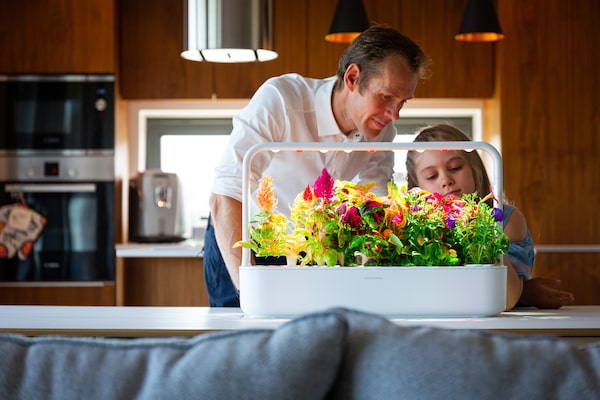
Self-watering and monitoring smart gardens like the Click & Grow, seen here, enable those living in homes without access to the outdoors a compact, versatile gardeining experience.Adam Illingworth/Supplied
Jose De Sousa’s childhood home in Caracas, Venezuela, boasted a large backyard garden filled with vibrant flowers. It was his mother’s pride and joy – so much so that all the care she put into tending it left him jealous and even bitter. When it would bloom, she would take pictures of De Sousa and his sister in front of all the plants.
“She’d always end up trying so hard to fit so much of the garden in the pictures that we would end up out of the frame,” he says. “We would get so upset when the photos came back.”
Twenty years later and living in Montreal with his own family, De Sousa finally understands why his mother was such a fanatic. He has discovered gardening to be meditative and fulfilling, bringing him peace whether weeding or harvesting.
Unfortunately, outdoors he only has access to a small patch of grass. While he was able to grow herbs and small plants, he was craving more. So when De Sousa saw how well a colleague’s Click & Grow smart gardening system was performing in their poorly lit office, he decided to buy one for his home. It was a success, from piri-piri peppers to a painted nettle plant.
“I placed my system near my dining room and it feels like a beautiful centrepiece in my home,” he says of the Smart Garden indoor container. “Whenever I’m cooking, I have the pleasure to take a few steps and pick some fresh cilantro or basil and add it into my meal. It’s a beautiful part of my day.”

Plant capsules are individually sealed and labelled to make for organized setup, when the Click & Grow system first arrives.Janar Raidla/Supplied
In this era of the smart home, it’s no surprise that gardeners – particularly those who live without a backyard or even a balcony – are cultivating a digital green thumb. Sleek systems that wouldn’t look out of place in Apple stores, such as the AVA, Click & Grow and AeroGarden, allow people to water, light and monitor their plants with the press of a button, whether they are at their kitchen table or out of town.
When Canadian startup AVA Technologies launched its US$400 gardening system this year, the first batch of preorders sold out in just a few weeks. Called the Byte, it works with soil-free plant “pods,” similar to Nespresso pods, that are available preseeded or customizable. Each comes with a scannable QR code that tells the machine what is being planted, and the water and LED lighting levels are adjusted accordingly. It can hold up to four weeks of water and has a built-in monitoring system and camera that allows users to keep watch from wherever they are – and even water the plants through their phone.
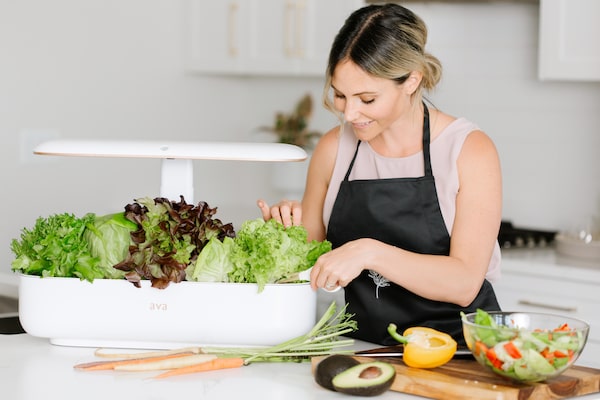
Canadian startup AVA Technologies launched its first gardening system this year, called The Byte, which promptly sold out.Supplied
The target market is people, particularly millennials, in search of a savvy solution for small spaces with minimal natural light. “We realized that there was a huge need for being able to grow at the comfort of your own home, even if you don’t have a lot of space,” says Valerie Song, CEO and co-founder of AVA Technologies. “You should still be able to have the option of growing beautiful, luscious green plants that you can eat or just enjoy the sight of.”
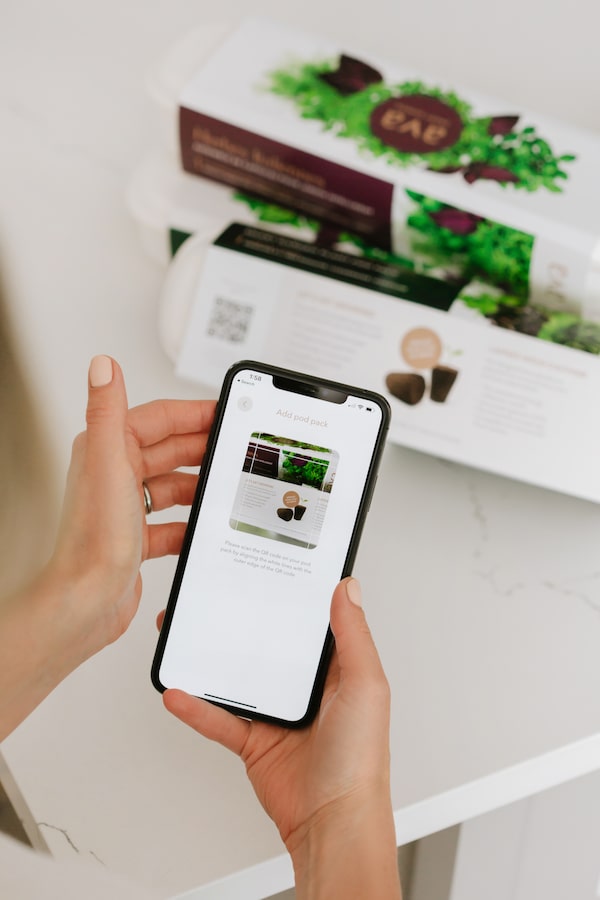
AVA Technologies's The Byte is filled with soil-free plant pods that come with a scannable QR code that communicates with the machine about what is being planted. The water and lighting levels are adjusted for those specifications.Supplied
When Sharon Menelaoui downsized recently from a townhouse to a condo in Toronto, the toughest adjustment was getting used to the limited space on her balcony after saying goodbye to a spacious backyard garden.
“It’s really hard to figure out what you can plant outside on the balcony garden due to the issue of wind tunnels around buildings. They have to be resilient enough,” she says.
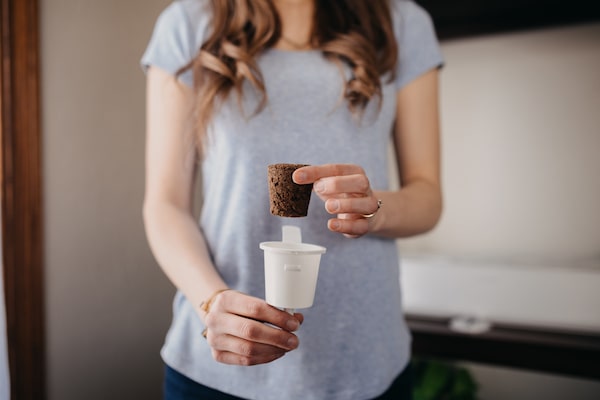
A woman inserts soil in the plant cup, as instructed with the Click & Grow smart gardening system.T/Supplied
Menelaoui came across the Click and Grow system – starting at US$100 – in a magazine during the height of COVID and felt inspired to make the purchase. “It was as easy as just plugging it in. Within three weeks, I had a bunch of basil to cook with. You just have to watch the water intake and it keeps growing.”
Simplicity has its benefits, but for many gardeners it’s the patience, endurance and tactility involved that makes the activity so rewarding. Gardening engages all of the senses and fosters the ability to adapt to change and failure. Technological gardens, on the other hand, are created to be successful.

A Click & Grow smart gardening system sits on a work desk.Janar Raidla/Supplied
Which is why Cheney Creamer, a horticultural therapy specialist based in Burnaby, B.C., says such systems aren’t as emotionally fulfilling as outdoor gardens.
“These types of products often have claims like, ‘perfectly designed,’ or, ‘perfectly calibrated to replicate nature.’ Every time I read that, I think that these people haven’t maybe met very many plants or haven’t been out in nature,” she says.
While there may be less work involved in maintaining her smart garden, Menelaoui says she simply enjoys the sight of a healthy and flourishing plant in her home.

Both functional and decorative, the Click & Grow smart gardening system can be fit into any spece large enough for a free-standing shelf.Supplied
“I just love being able to see that luscious and natural burst of green in my home all the time. I’m really looking forward to the winter because I’m sure it’s going to be such a wonderful sight to have something growing in my house when everything outside is so dead and dreary.”
Indeed, research has shown that any level of engagement with nature is positive. It’s why Creamer named her wellness consulting organization One Green Square, after psychological studies proved that even looking at the colour green can promote creativity and problem solving. And it’s why, despite her hesitations, she thinks these systems could be a way to get more individuals interested in gardening.
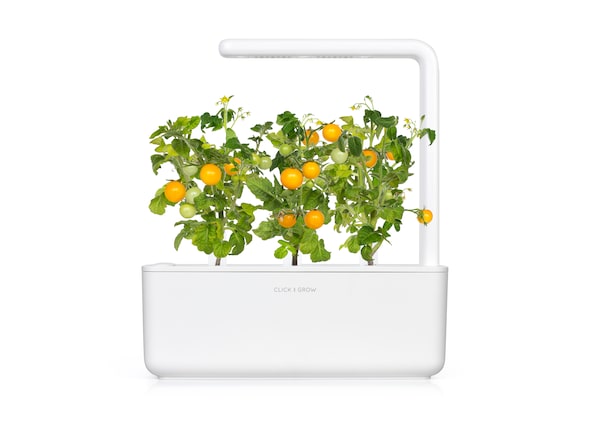
Yellow tomato plants ripen in the Click & Grow smart gardening system, a self-growing indoor gardening container.Janar Raidla/Supplied
“I absolutely believe that there is a place for these smart gardens, especially for those with accessibility issues. All interactions with nature have therapeutic benefits,” she says. “But I see these devices as gateway gardens, like a gateway drug. If you know someone who doesn’t really have any interest in plants or gardening, I think this might be a fun and easy way to pique their interest.”
Sign up for the weekly Style newsletter, your guide to fashion, beauty and design, and follow us on Instagram @globestyle.